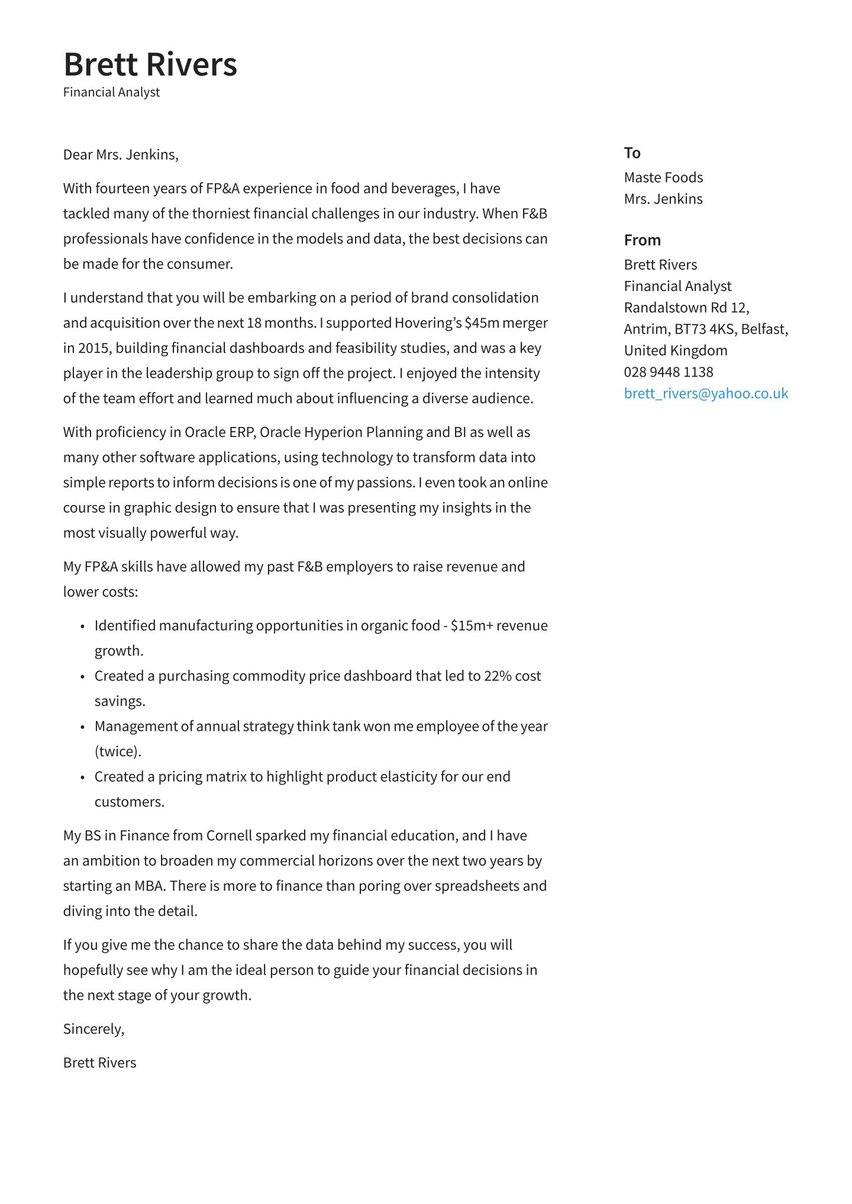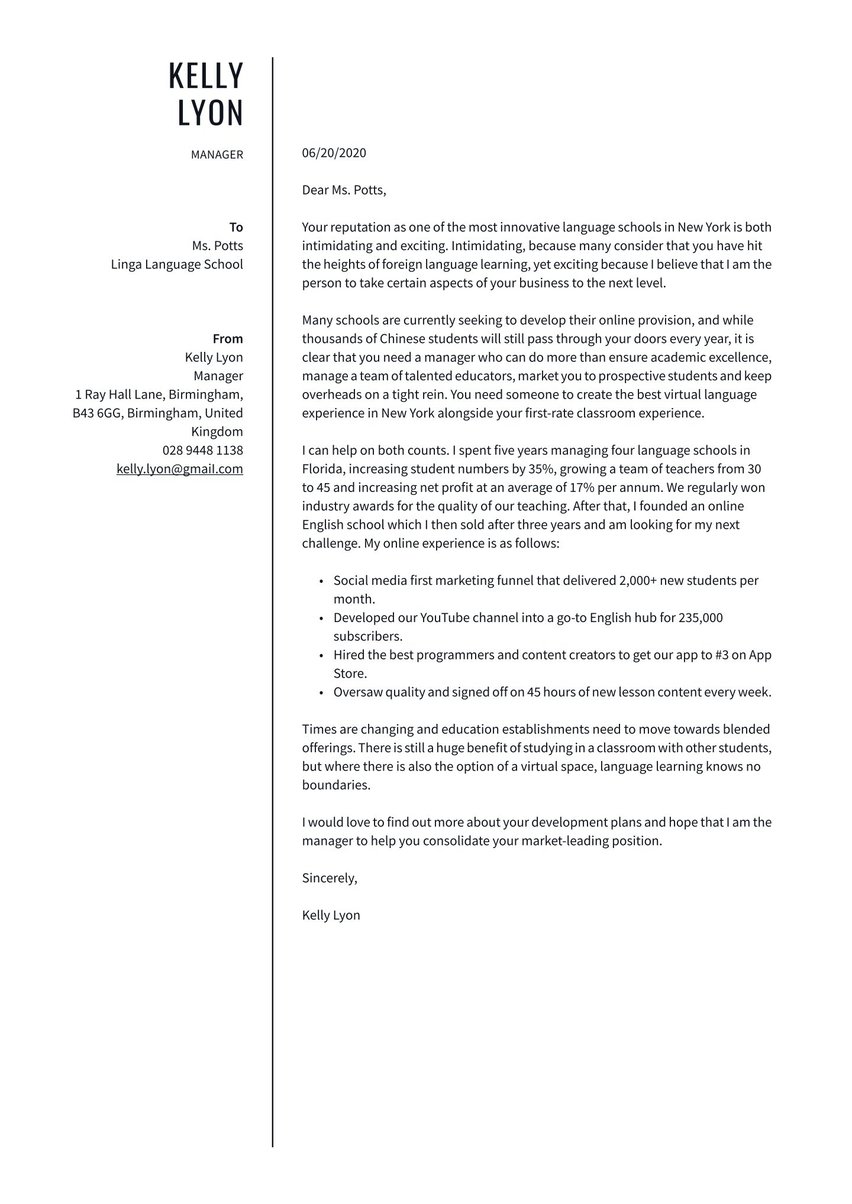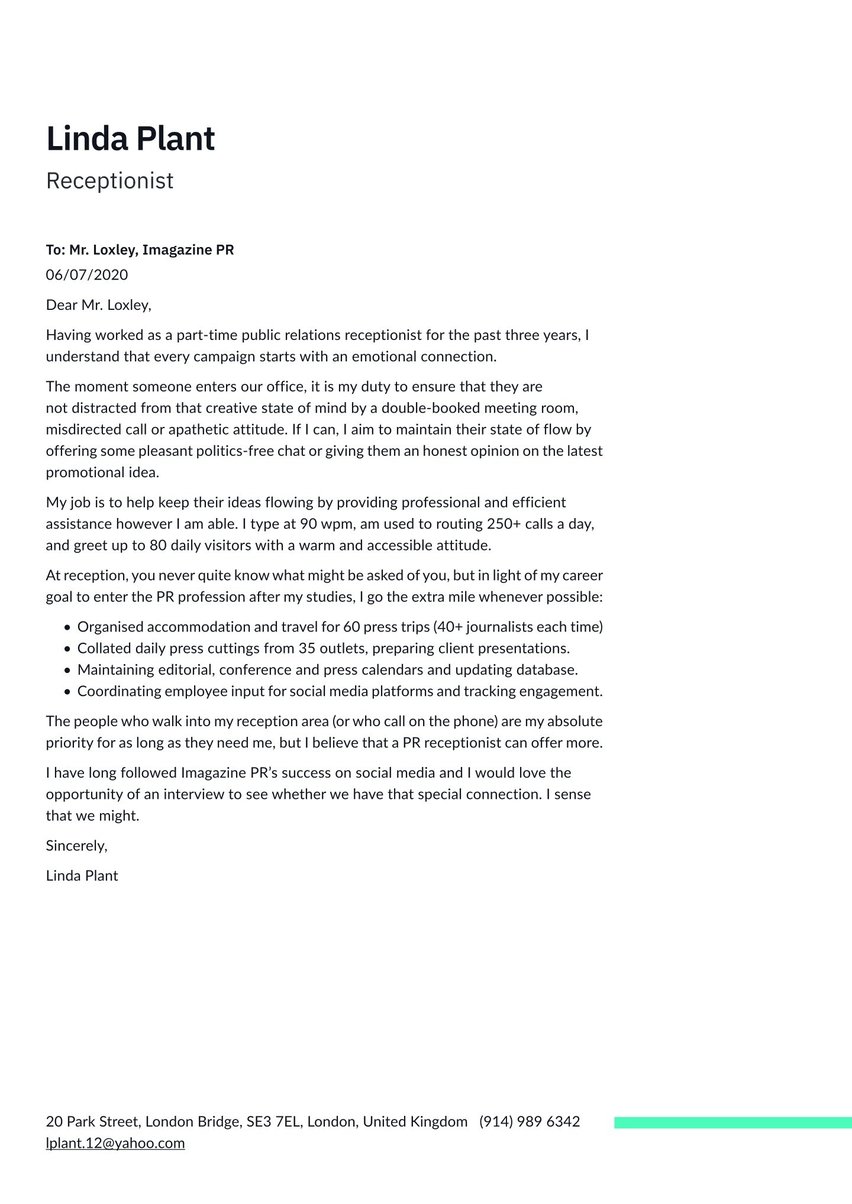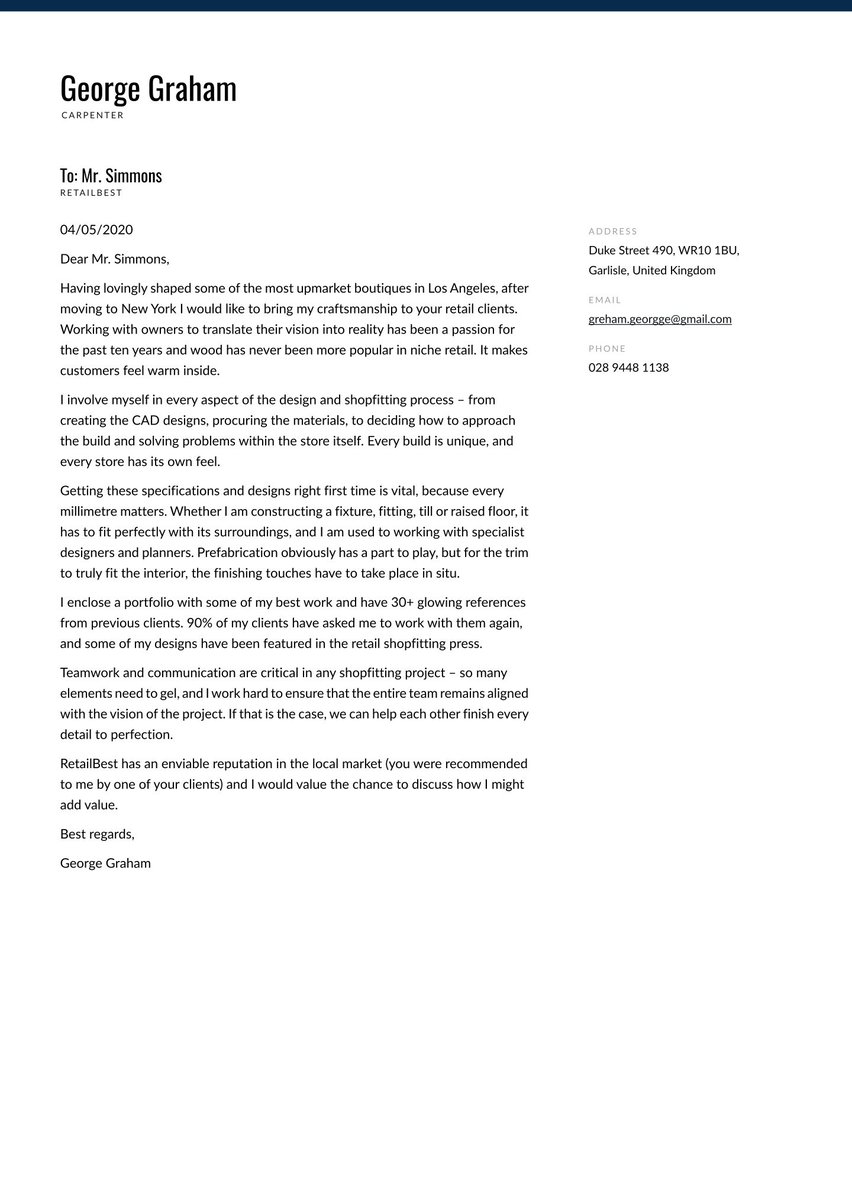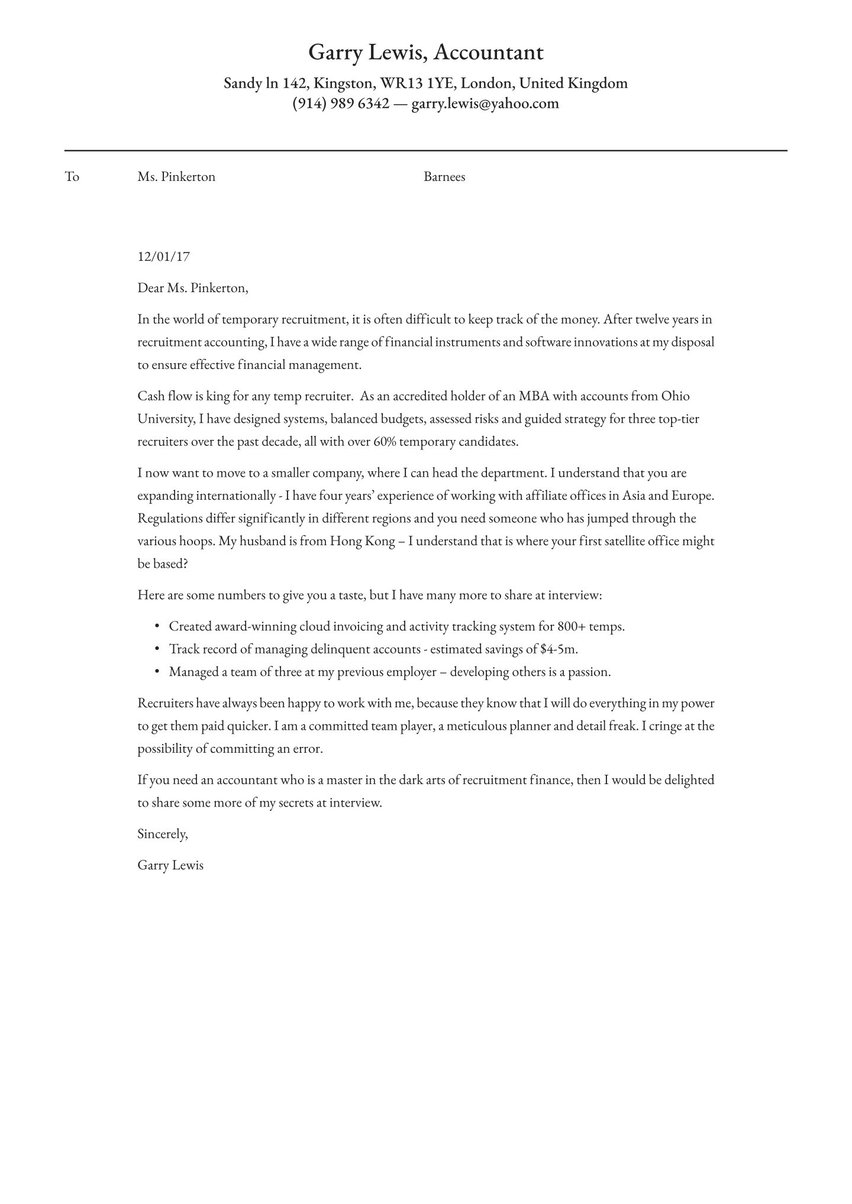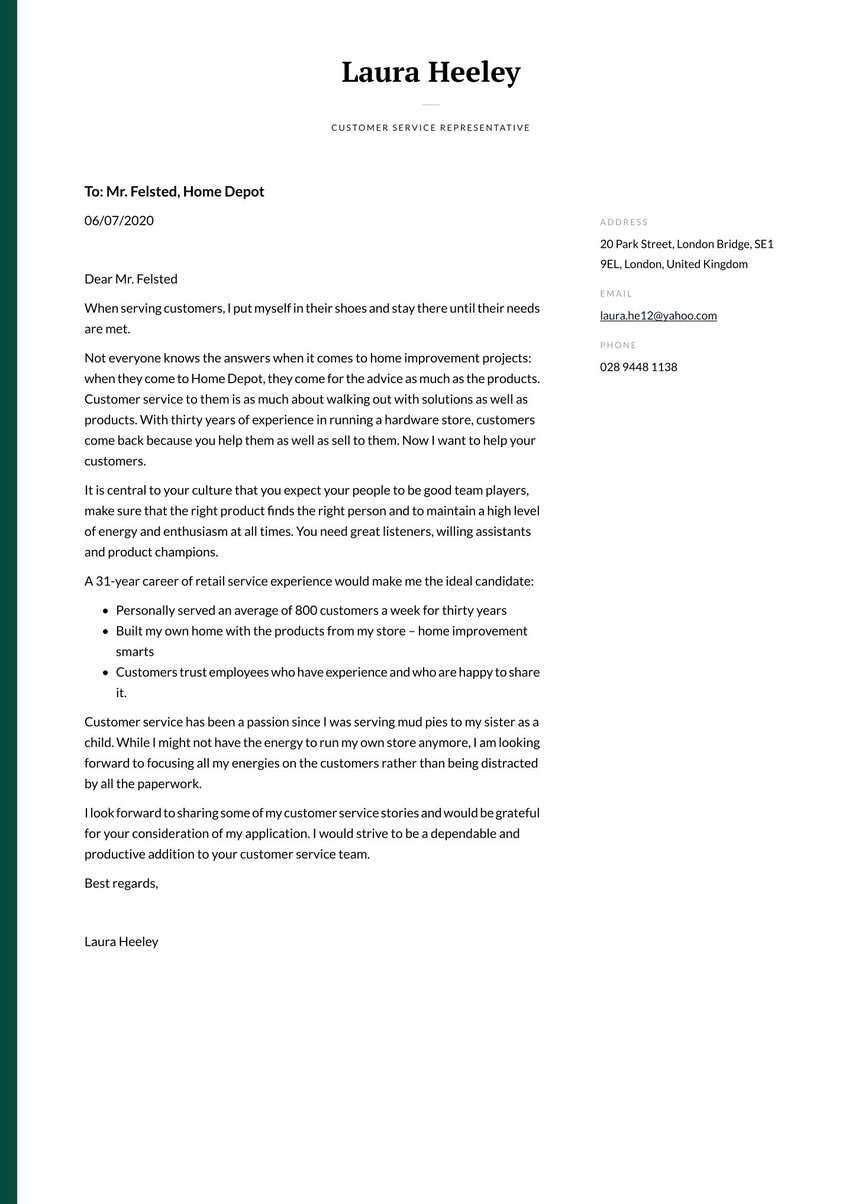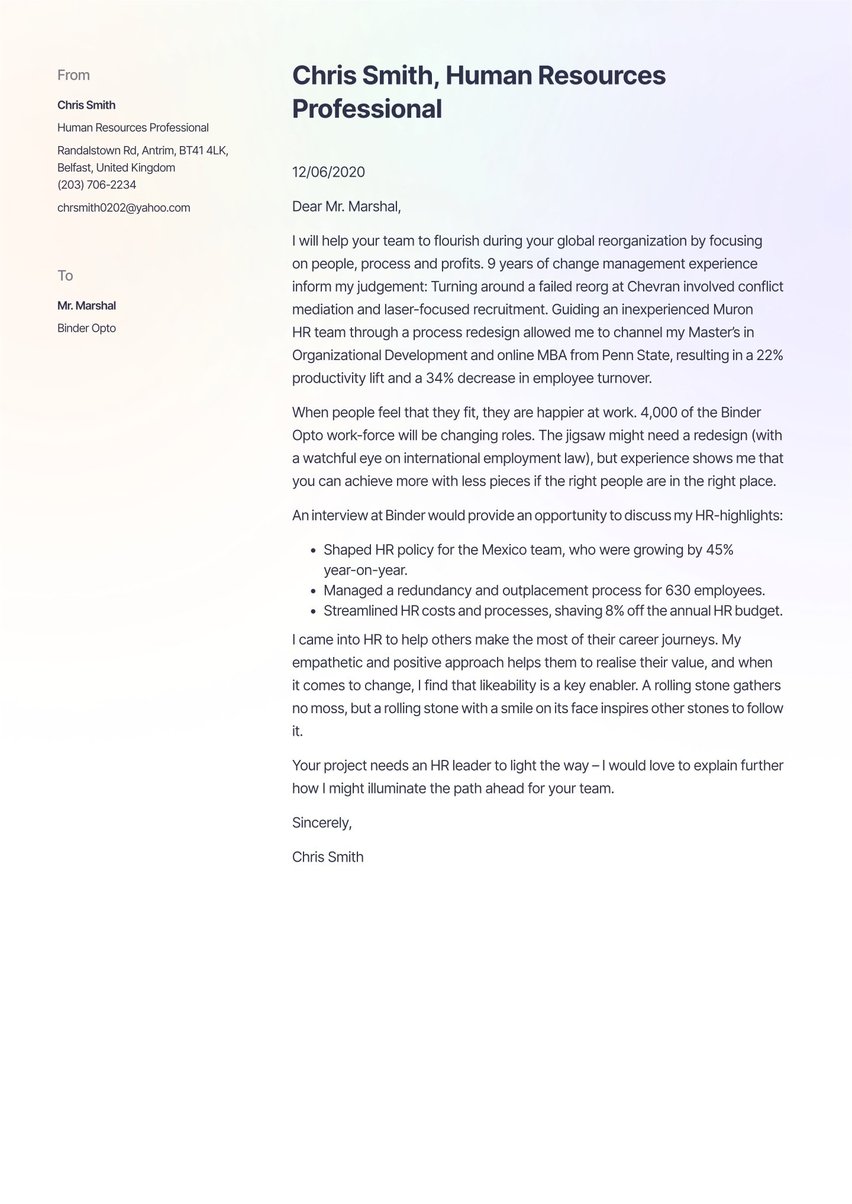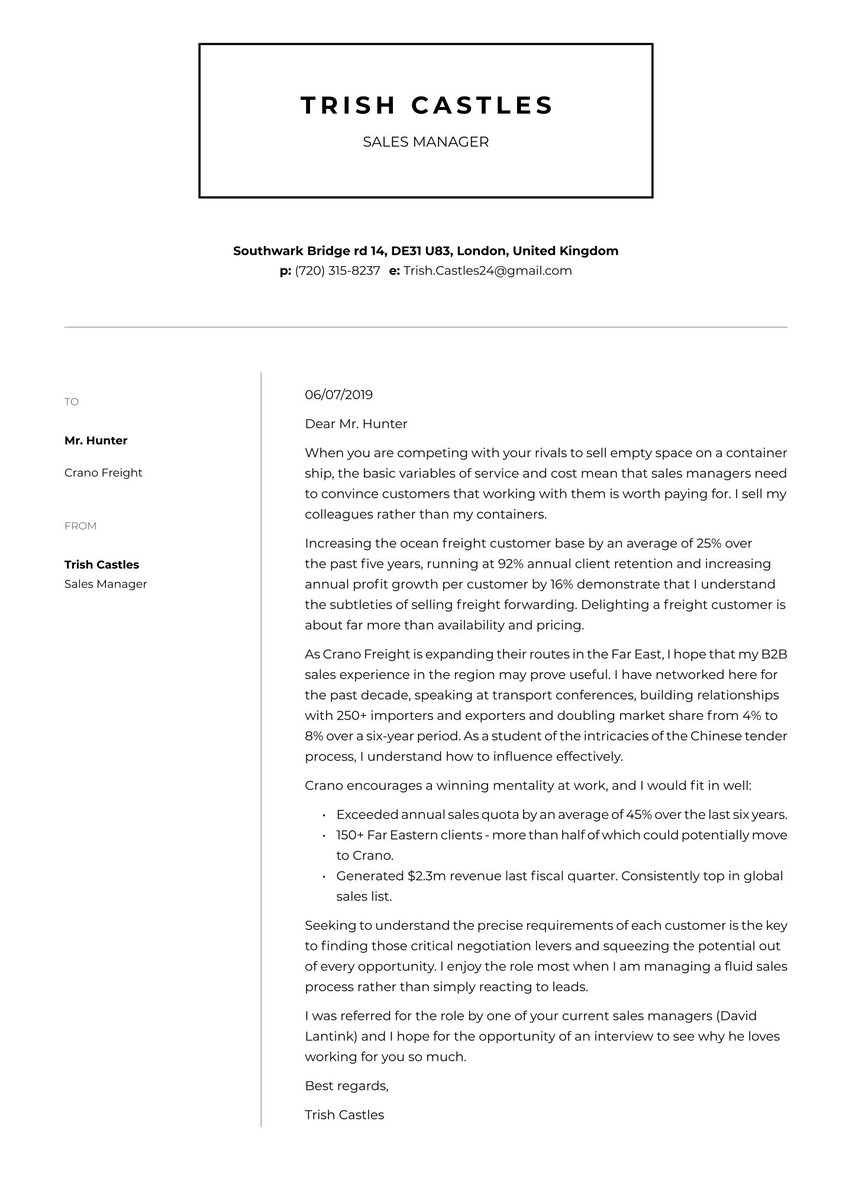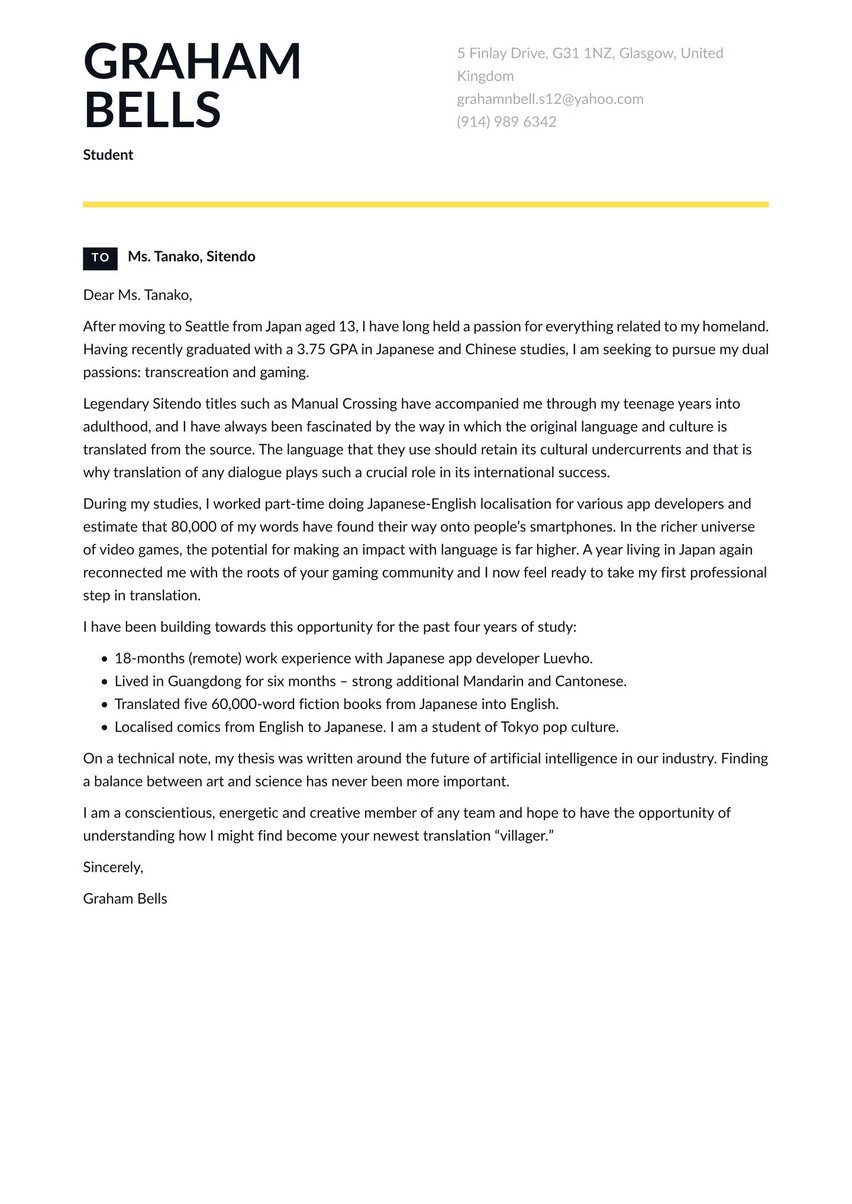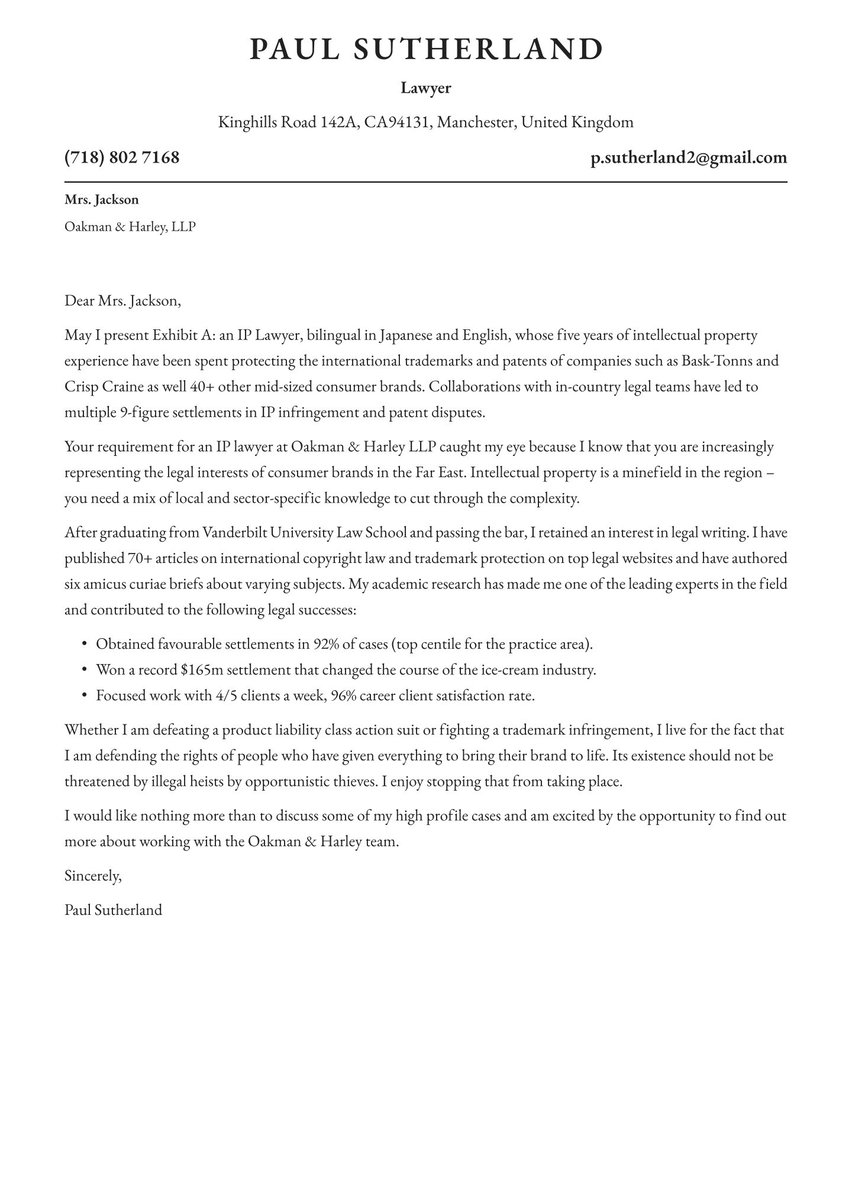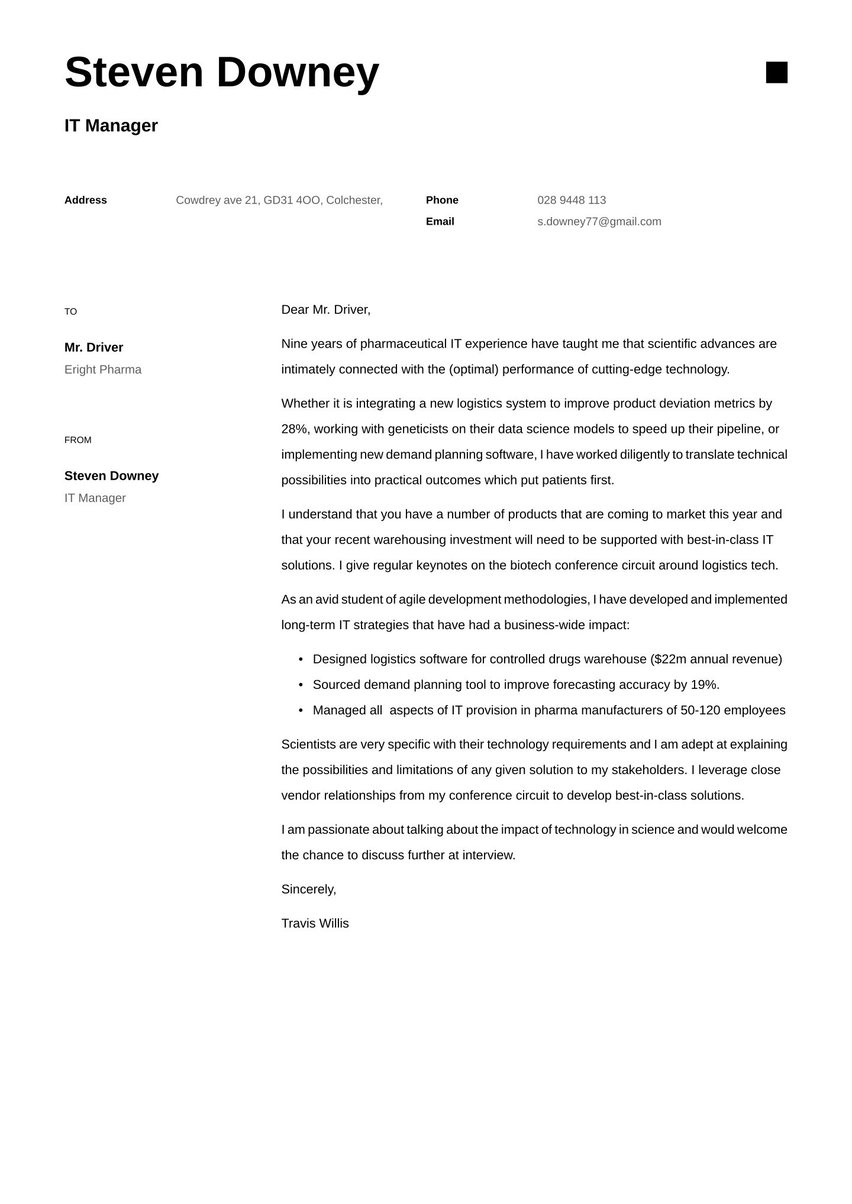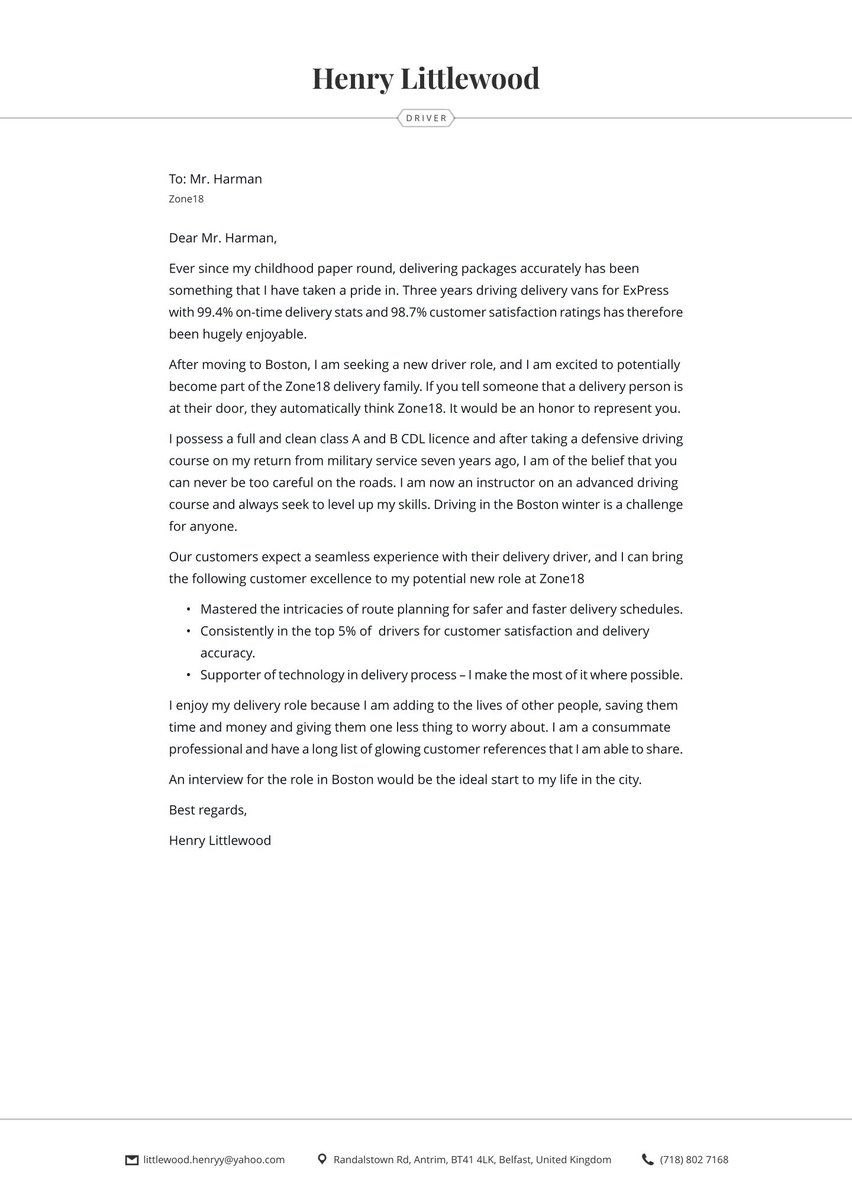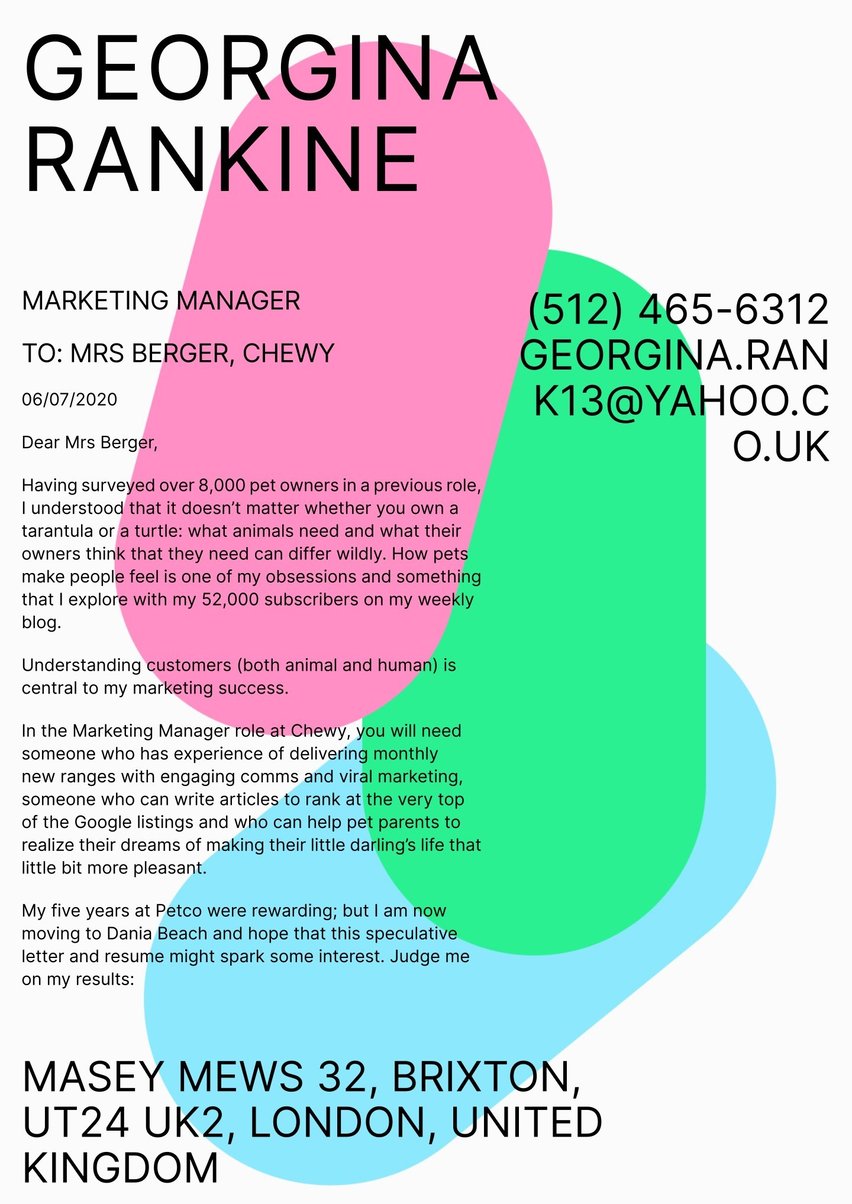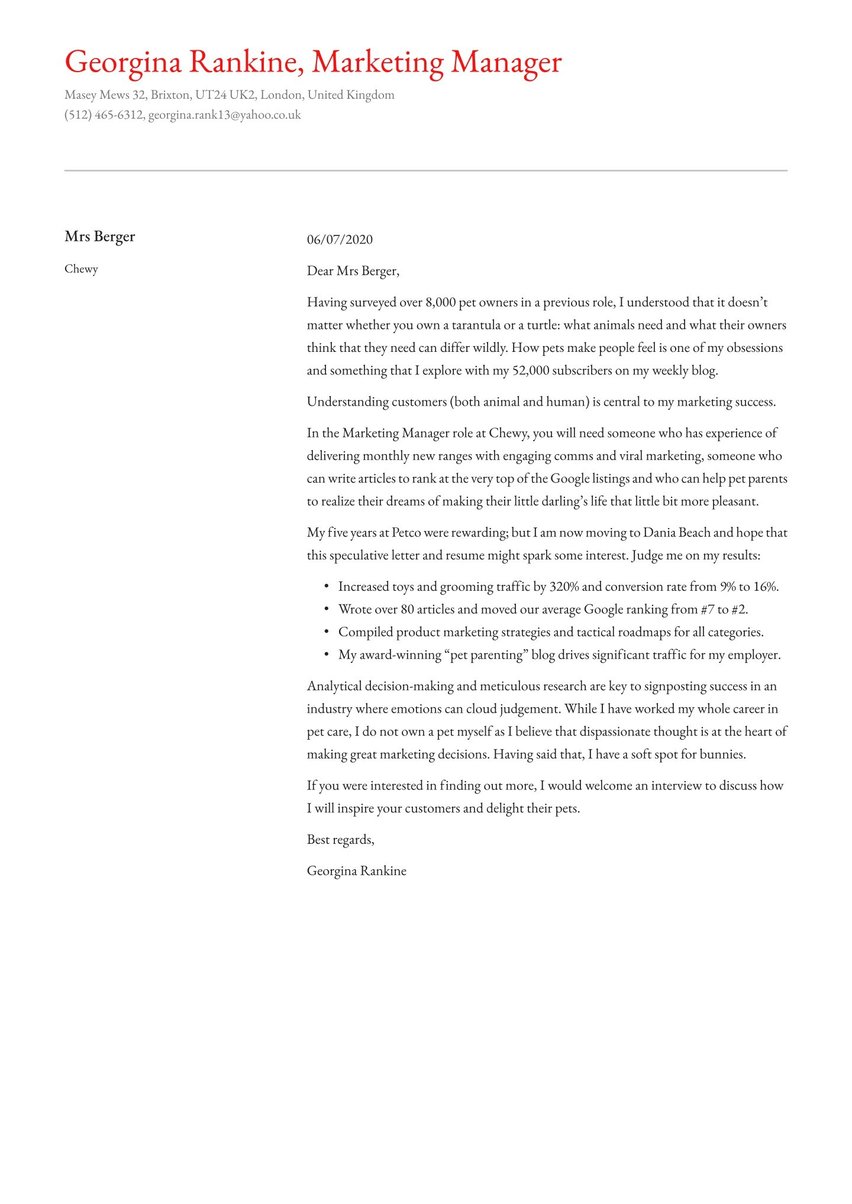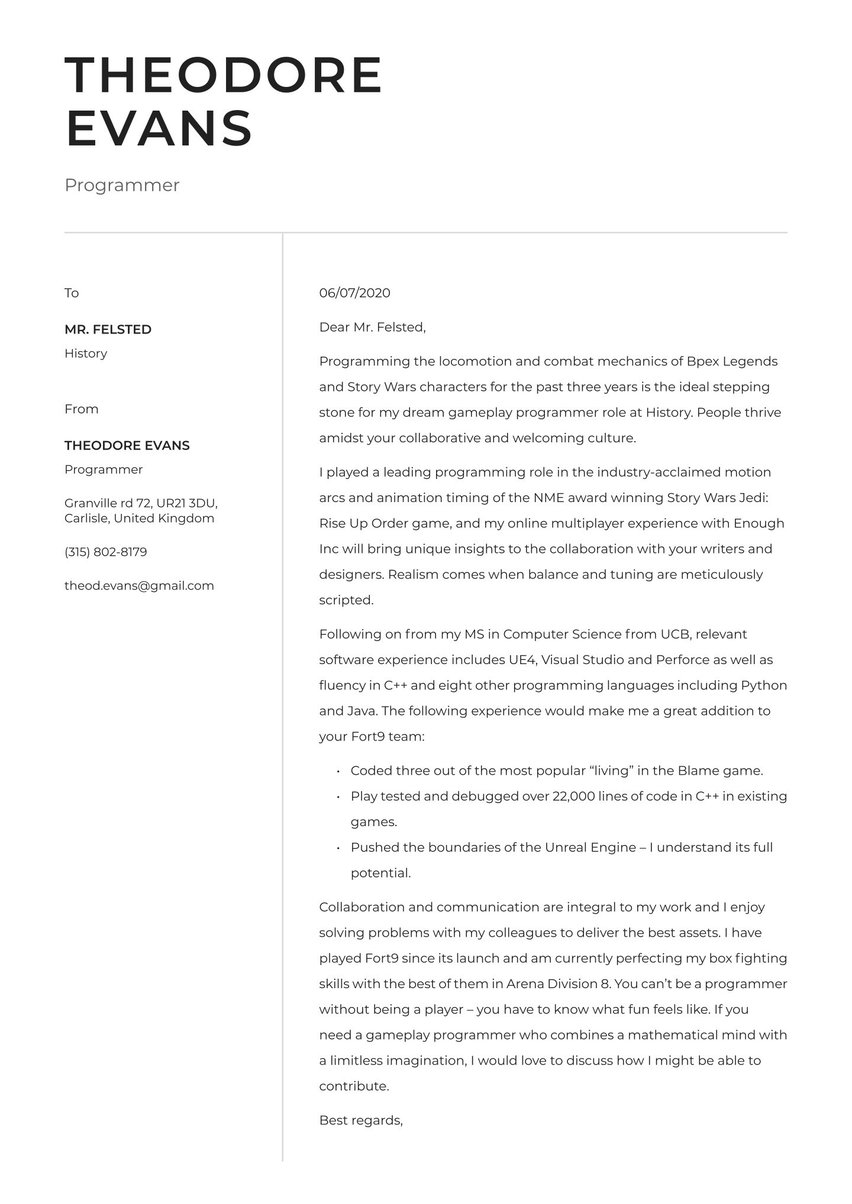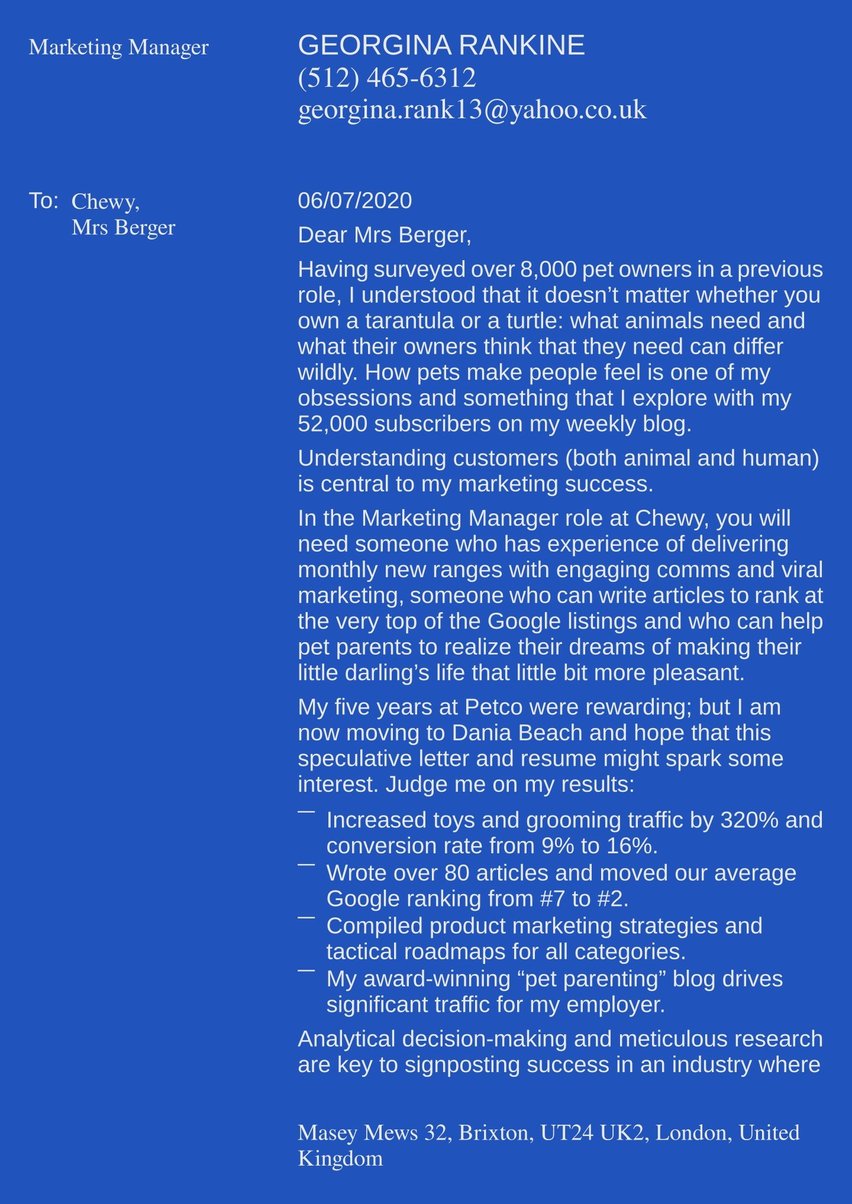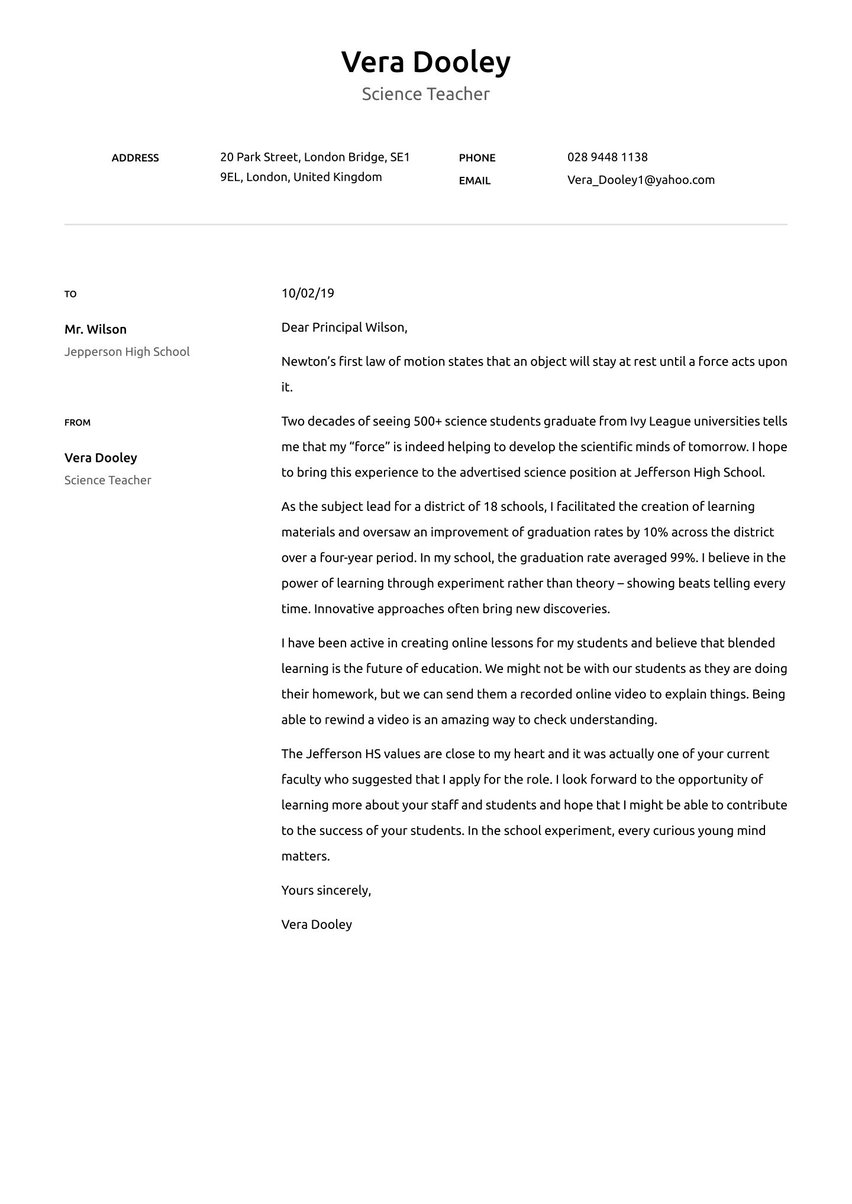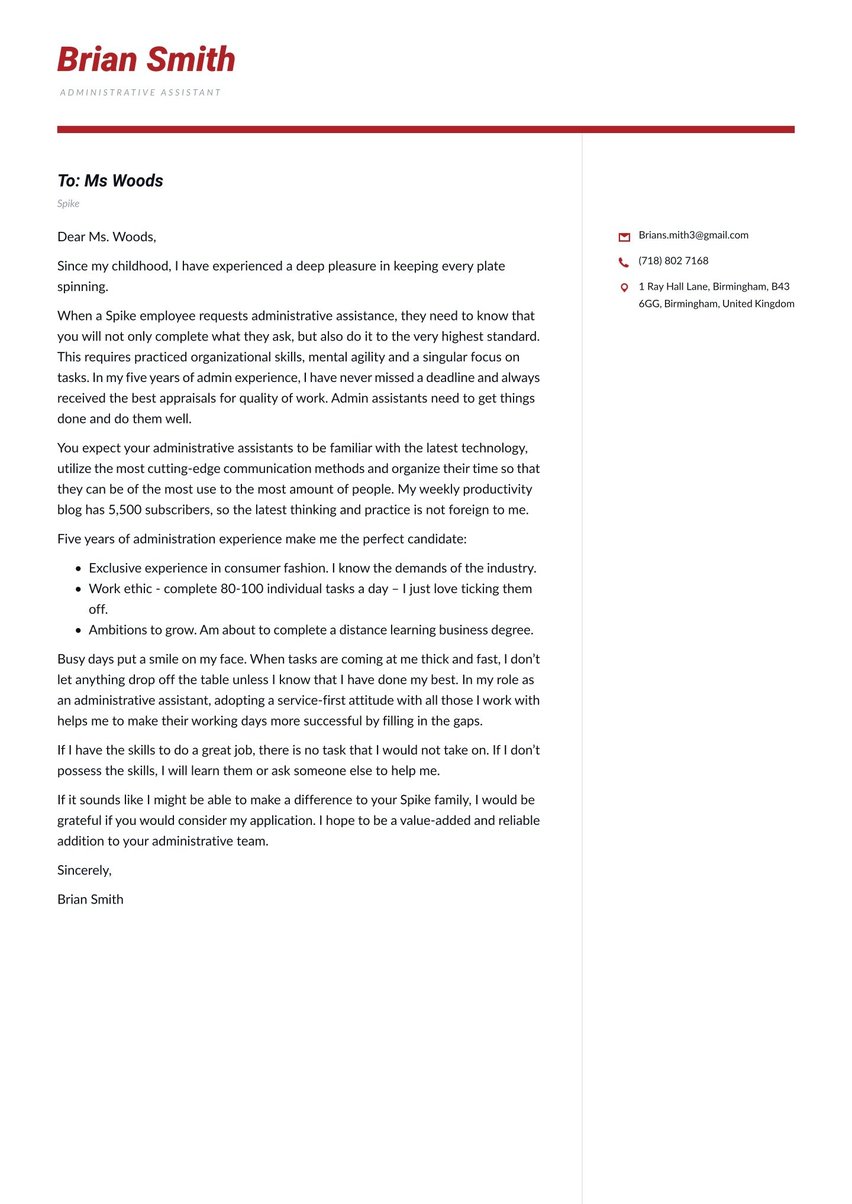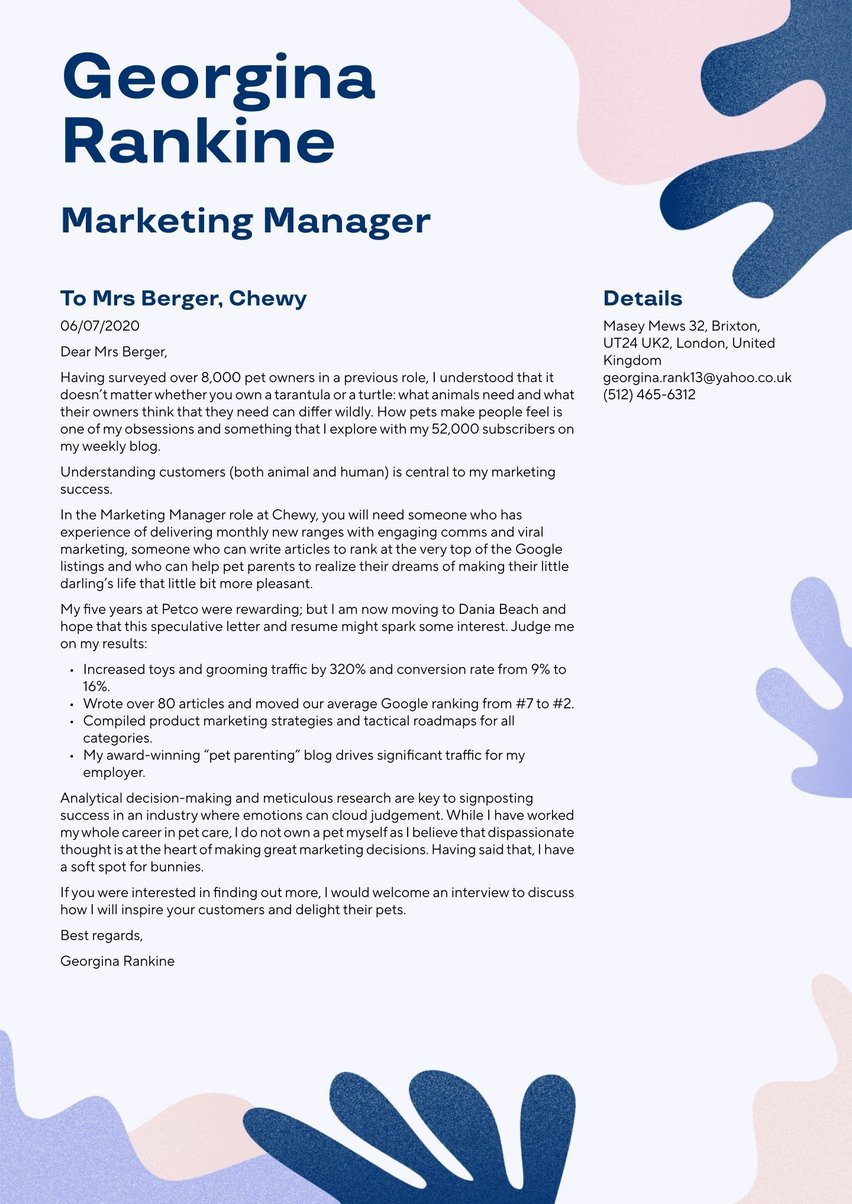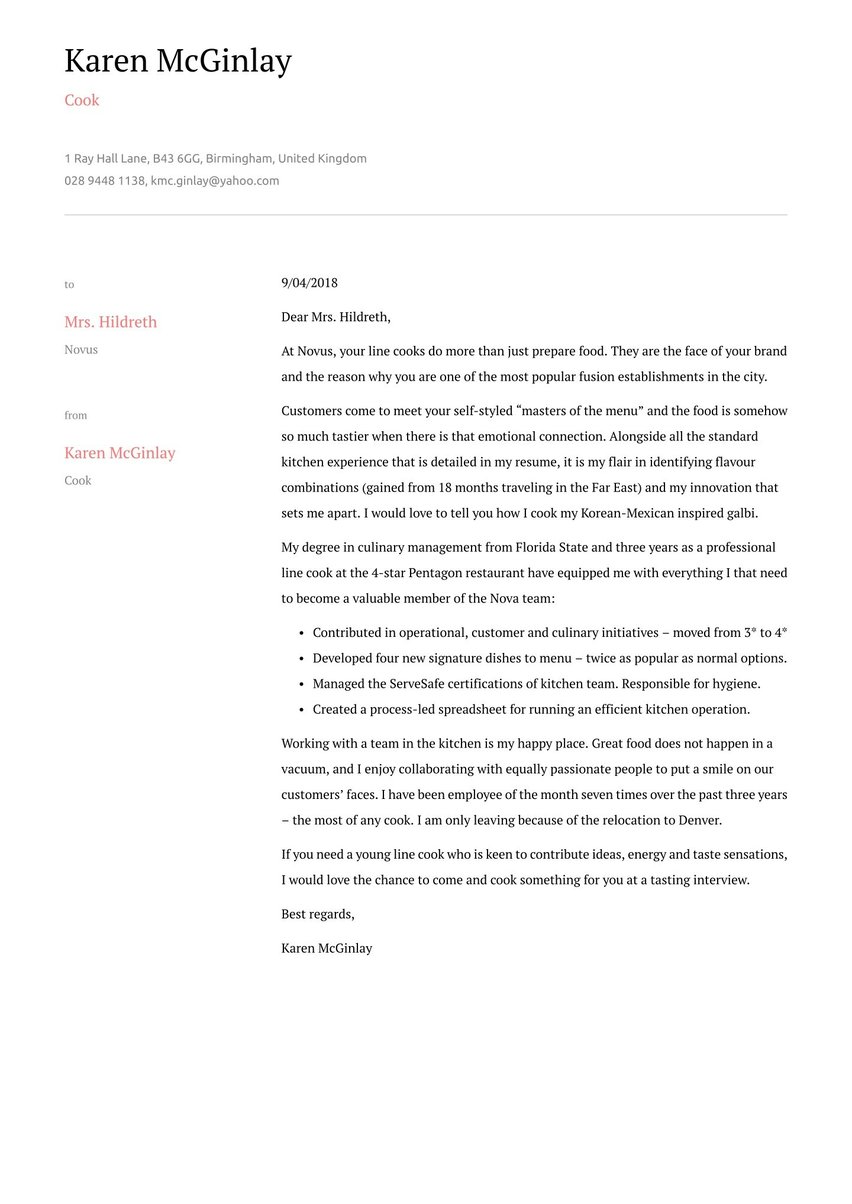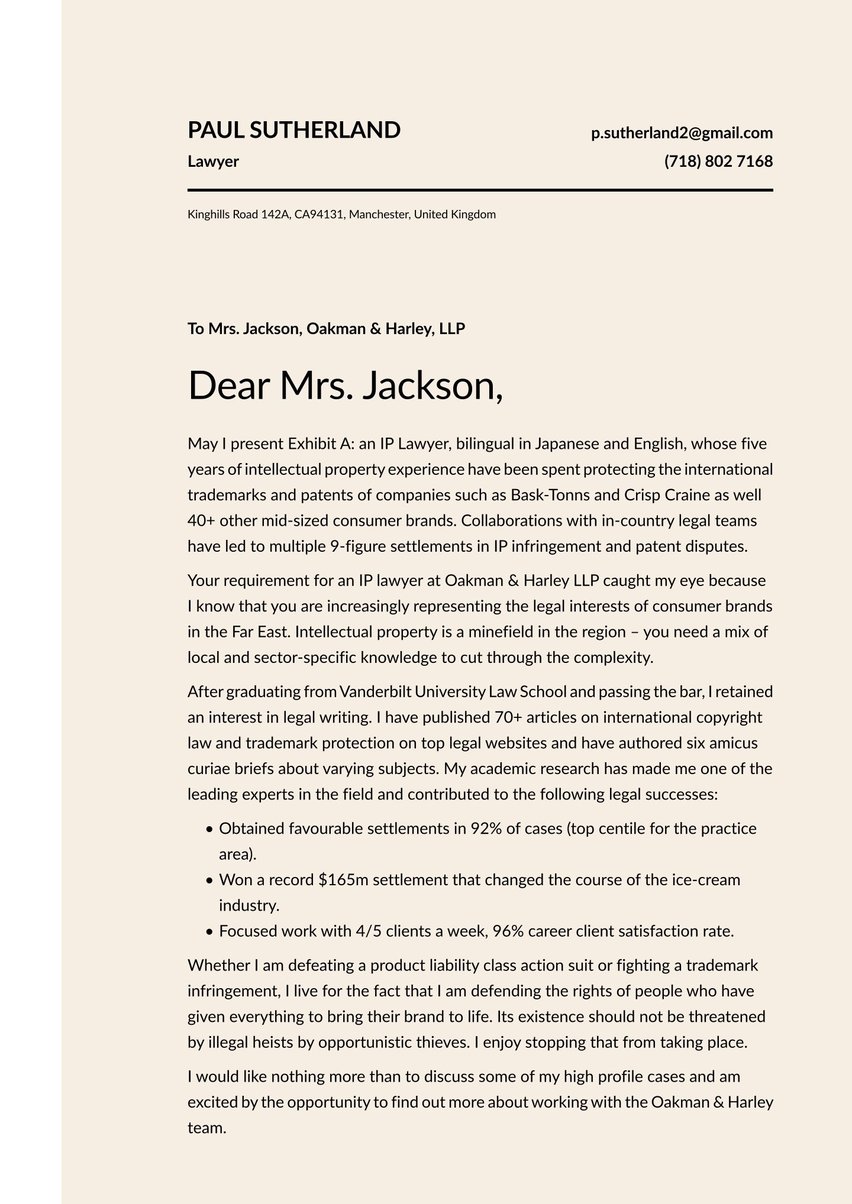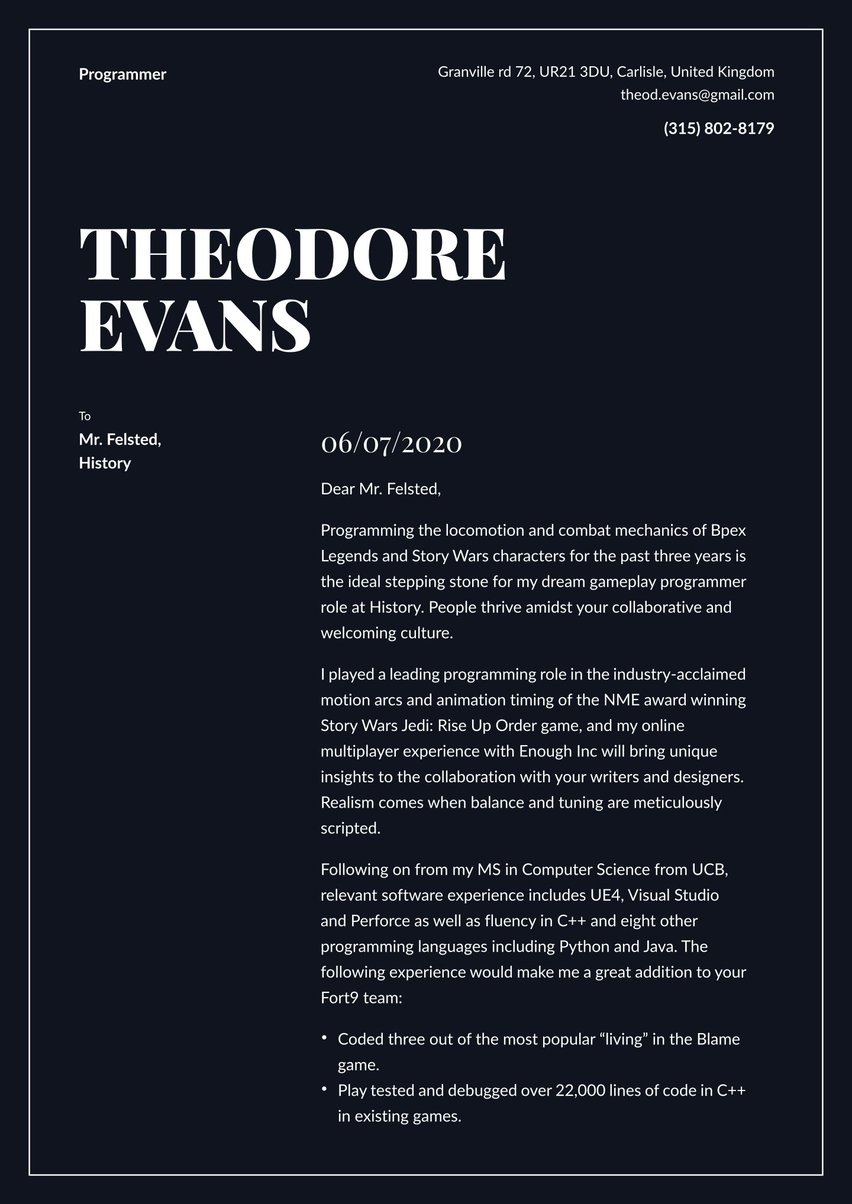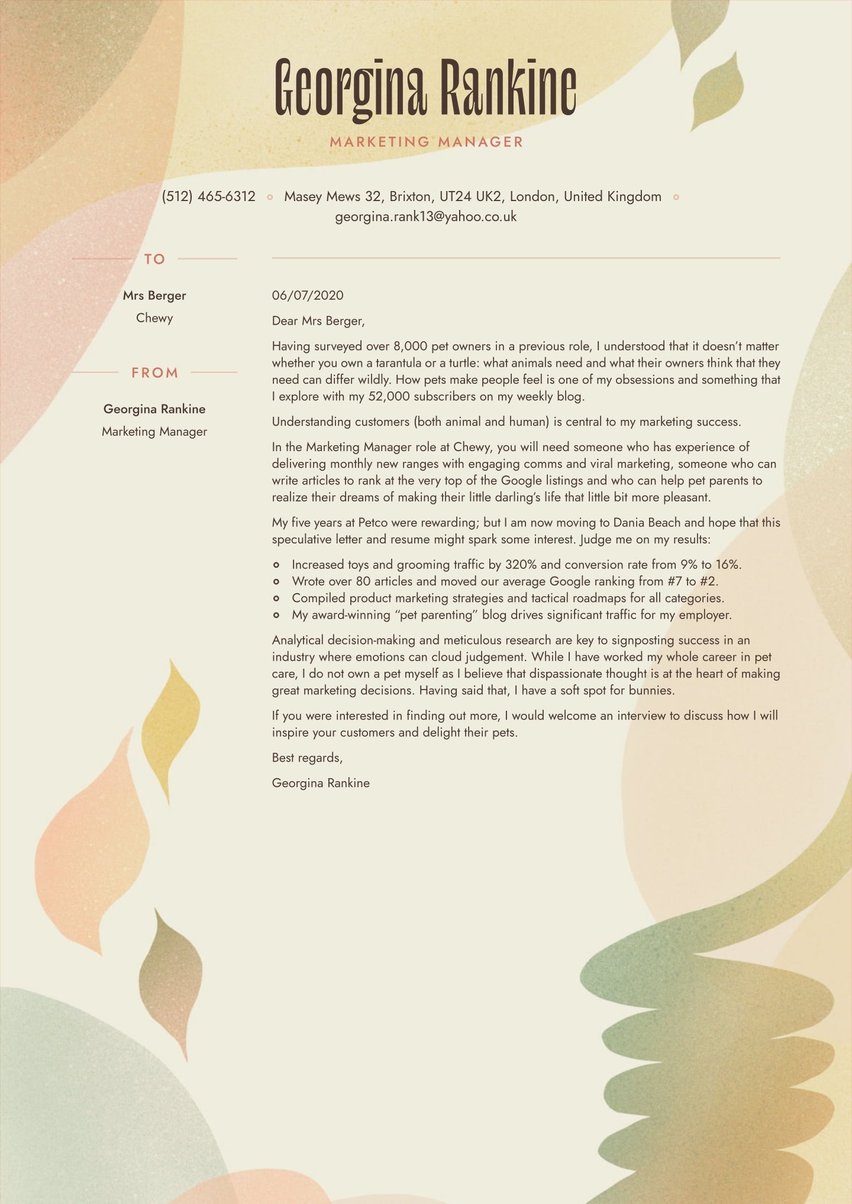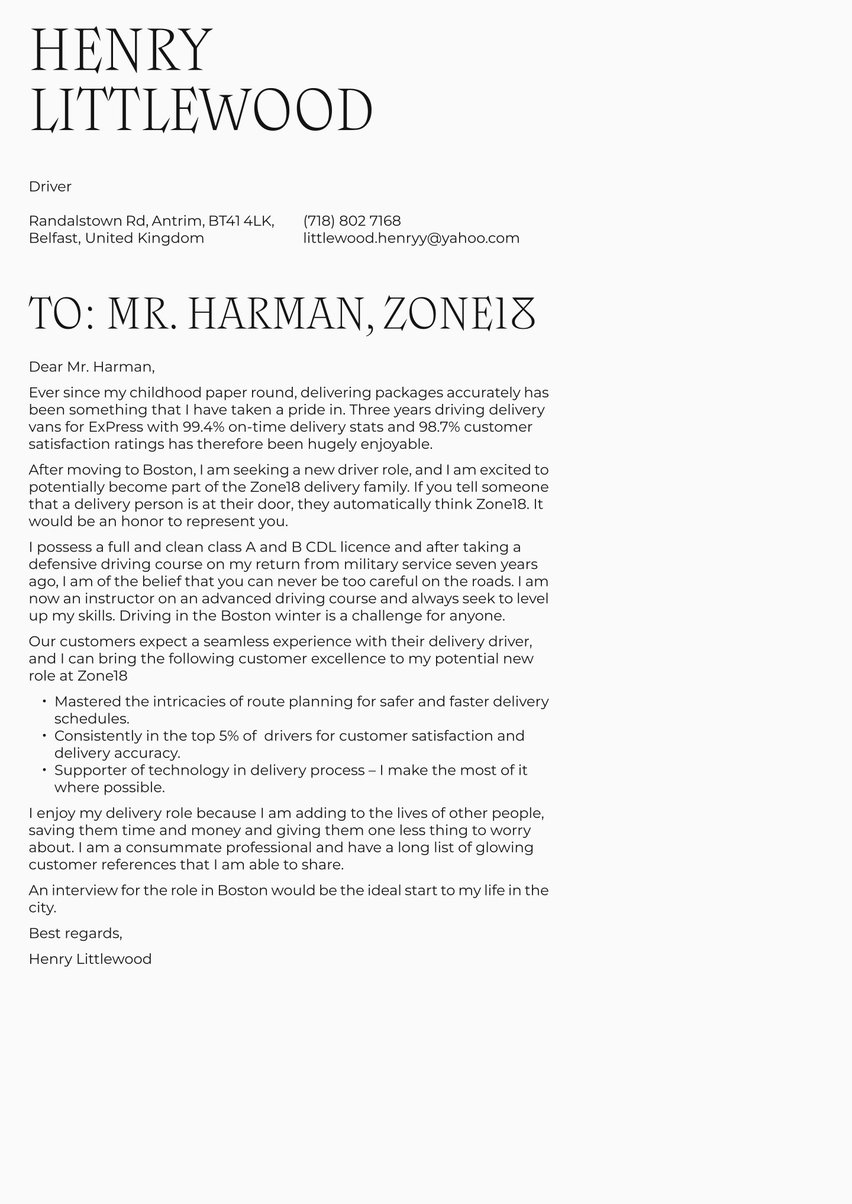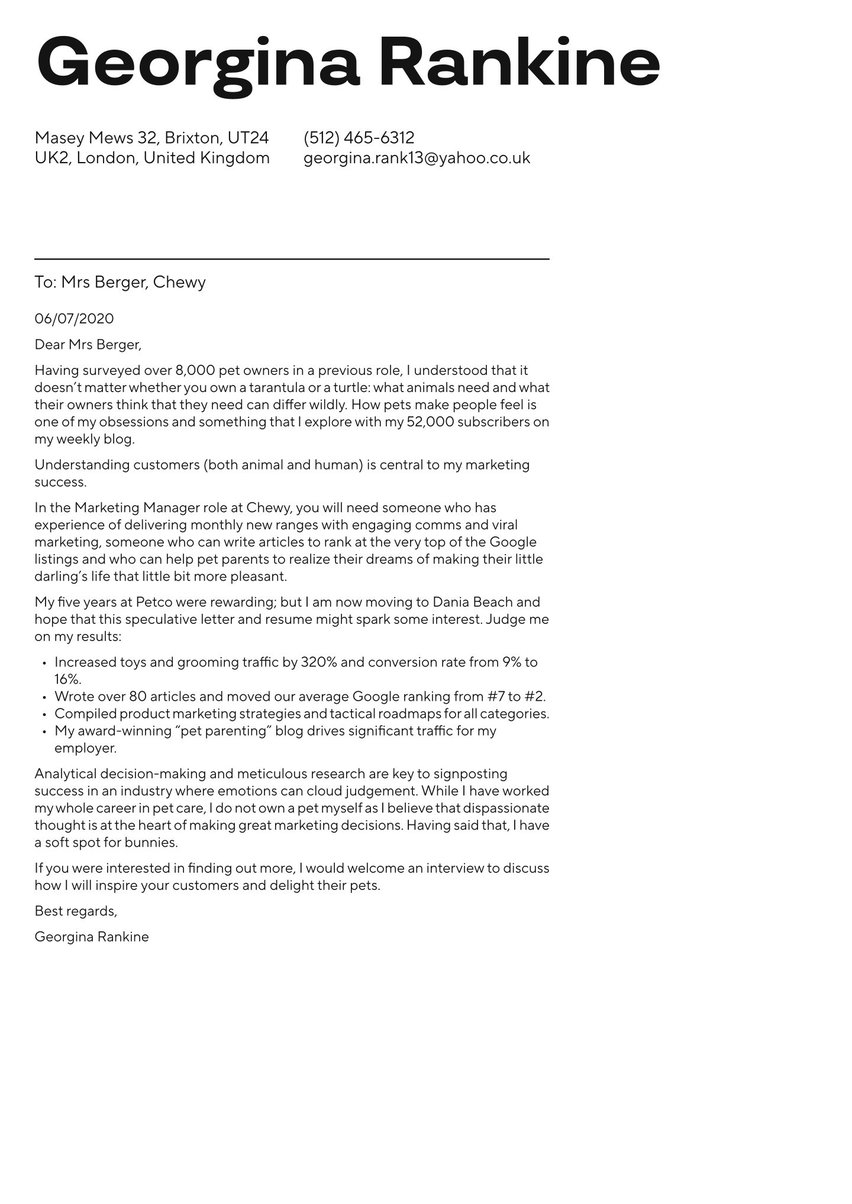The cover letter is the first thing that lands on the hiring manager's desk when you apply for a job. You’ll only need a short cover letter, as long as you cover the most important aspects of your skills and experience. Your cover letter should be concise, informative and should lead the hiring manager to your CV.
If you can quantify your value in a few short sentences, you can be sure that the hiring manager will anticipate a punchy and powerful interview performance. If your cover letter is long and rambling, what would stop them thinking that you are not entirely sure where your value lies?
You may also think that a cover letter is a waste of time; the hiring manager has your CV, so what is the point? However, you would be surprised to learn that 86% of recruiters surveyed by OfficeTeam felt that cover letters are valuable. There are too many contrarians on social media who are seeking engagement when they say that cover letters aren't required any more. Why not use the extra opportunity to see your skills?
With this in mind, we know that you need one, but how can you create a short cover letter that is just as effective, or more so, than a long cover letter?
In this short cover letter guide, we will look at these topics so you can get a good understanding of how to write an effective short cover letter:
- Why you should consider using a short cover letter
- How to start your short cover letter
- The most impactful content to use in the middle section of your short cover letter
- How to conclude your short cover letter
- Short cover letter examples
- Key takeaways for a short cover letter
What do you need to think about when you start writing your short cover letter guide? How do you ensure you make an impact in a short time? This guide will uncover the best ways to make the most of your short cover letter. We also have some cover letter examples you might want to refer to as we go through the information.
Best format for a short cover letter
The main objective for sending a short cover letter with your application is to give the hiring manager a brief insight into your main skills and experience relevant to the role. In addition, you want the hiring manager to be engaged enough with your cover letter that they are excited to move on to your CV. If your cover letter fails to hit the spot, the hiring manager will probably not go further. To put it bluntly, your CV will probably end up in the nearest shredder! Therefore, you must make your mark with the short cover letter. You can use our short cover letter samples for some further guidance.
Your short cover letter should consist of these main elements:
- Header
- Greeting/salutation
- Introduction
- Body of the letter
- Conclusion (sign-off) and call to action
No matter what industry or role you are applying for, the format you use for your short cover letter should allow you to cover how you deal with the job on a daily basis. You can use our cover letter examples for inspiration throughout this short cover letter guide.
It is perfectly acceptable to not fill the page of the cover letter. If you are starting out in your career it is more worthwhile to focus on your core skills. Highlighting potential is more important than waffling about irrelevant experiences - be comfortable when less is more.
We also have this comprehensive guide on cover letter writing if you want more general help with writing your cover letter.
Here is a short cover letter example for an internship, which you can adapt to suit:
Dear Ms. White,
Having worked in the back office of a retailer for the past seven years, I feel that I am ideally placed for the office administrator role in your shopping centre. I am an expert in operational retail processes and have been ‘Employee of the Month’ on six occasions.
My previous in-store retail experience should also prove useful. It is easier to deal with timesheets and manage budgets when you have done the job yourself. I pride myself on being relatable and conscientious.
It would give me great pleasure to meet you and discuss how my experience may best suit your needs. Daria Cutter worked with me at a previous employer and feel that my personable nature would be a good fit.
Yours sincerely,
Julie Fergus
Cover letter header
Your short cover letter should have a cover letter header at the top of the document, which contains key information, including your name and contact details. You should always list your contact details on the short cover letter, even though it will be on your CV. The hiring manager may have enough information from the cover letter to want to proceed to an interview.
You do not have to include your full home address on the cover letter - just a town and state will be fine. There is equally no requirement for the inside address of the employer, unless you wish to be overly formal.
If you have a portfolio or some great recommendations on LinkedIn, you may also want to include these on the header of your cover letter. Don't make it too bulky; just a link to the information will be sufficient. The header should be prominent but without taking up too much space on your cover letter.
The aim of the cover letter header: to provide the hiring manager with your contact details so they can reach you.
Cover letter greeting
The most important interaction we have with people is when we first meet them. As they say, first impressions count. The way in which we greet people can leave a lasting impression and make or break a relationship. Therefore, it is crucial to make a positive first impression in your short cover letter. So, always start with a greeting to the hiring manager.
Unlike an email where it is acceptable to start with "Hello" or "Hi," the same theory doesn't apply to a cover letter greeting. You should always use a formal greeting when writing a cover letter, such as "Dear Mr./Mrs./Ms. Surname."
It is also acceptable to use "Dear Recruitment Team" if you are unsure of the hiring manager's name. Personalising the greeting is the more favourable option, though, as this is how you can start to build some rapport. If you are personalising the cover, check and re-check the spelling of the name of the recipient. Spelling someone's name wrong is the easiest way to start on the wrong footing.
The aim of letter greeting/salutation: Open positively and professionally and start to build rapport instantly.
Cover letter introduction
The introduction of your short cover letter should set the scene, giving the hiring manager an insight into what has led you to apply for the job. The heart of your expertise and skills should be covered in the introduction to grab the hiring manager's attention.
In one or two sentences, you should tell the hiring manager why you are the right person for the job and what aspects of your experience make you stand out from the other candidates.
The hiring manager should quickly feel confident that you are equipped to deal with the tasks of the job and the challenges it may bring. Use our cover letter samples for some additional help in writing your own cover letter introduction.
The cover letter intro aim: to discuss the most important aspects of your experience and how they relate to the role. Give the hiring manager an understanding of why you are suitable for the position within just a couple of sentences.
This is a short cover letter example for a candidate applying for a role within the marketing department of a tech company.
Dear Ms. White,
Having worked in the back office of a retailer for the past seven years, I feel that I am ideally placed for the office administrator role in your shopping centre. I am an expert in operational retail processes and have been ‘Employee of the Month’ on six occasions.
Cover letter middle part (body)
The middle part, or body, of the short cover letter is where you state the most important aspects of your career and substantiate them with quantifiable data where relevant. It should be compelling and make the hiring manager sit up and take notice. Use examples that show your ability to excel within the role and make a real impact. Give the hiring manager a good insight into how you would cope today in the role and manage the challenges.
There is no need to go into detail here; you can even use bullet points. The main objective is to ensure the hiring manager believes that you are the right fit. You can fit this into just a few impactful sentences.
No matter what industry you are applying to, there is usually some way to quantify your experience. For instance, the number of customers you deal with per day, the number of sales you make, how you help improve the profitability of your clients. Quantifiable data makes much more impact than simply detailing what you do.
The aim of the body of your cover letter: What does a day in life look like when you are
at work? The manager should have a clear insight into what value you can offer. The cover letter examples throughout this guide should help give you a good starting point to use to create the middle section of your own cover letter.
My previous in-store retail experience should also prove useful. It is easier to deal with timesheets and manage budgets when you have done the job yourself. I pride myself on being relatable and conscientious.
How to close a short cover letter (conclusion and sign-off)
With your short cover letter, you should end with a conclusion, rather than leaving abruptly. The conclusion only needs to be a couple of sentences and should be a quick summary of what you have discussed in the cover letter.
The conclusion can leave a lasting impression, so it should be positive and leave no doubt that you are excited about the prospect of landing the job! It is short but sweet and acts as a catalyst for the hiring manager to proceed to a more detailed CV.
The conclusion should be professional and should not be presumptuous. For example, you should state that you are excited about the prospect of attending an interview rather than saying that you can't wait for the interview. Confidence is good but being overconfident will put the hiring manager off.
The aim of the conclusion: Reiterate why you are suitable for the job and show your enthusiasm for potential progression to the interview stage.
- Keep your short cover letter to a page or less
- Ensure you start with a greeting and end with a sign-off
- Use professional language, and check for errors before submitting
- Show your excitement for the role and the company
- Substantiate claims with quantifiable data
- Forget to include your contact details
- Use any negative language. Make sure your short cover letter is upbeat.
- Repeat yourself during the cover letter, make sure it is engaging
Here is a short cover letter example for a candidate looking for a career change with a focus on transferable skills.
It would give me great pleasure to meet you and discuss how my experience may best suit your needs. Daria Cutter worked with me at a previous employer and feel that my personable nature would be a good fit.
Yours sincerely,
Julie Fergus
Basic mistakes in a short cover letter (and how to avoid them)
No matter what job you are applying for, you need to pay attention to your short cover letter and ensure the information is carefully presented. These are some common mistakes made with cover letters and how to avoid them.
Spelling or grammatical errors
Regardless of the role you are applying to, even if it doesn't require you to do any computer work, you should take care with the spelling and grammar. Spelling and grammatical errors suggest a lack of care and attention to detail with your application. There are plenty of options for spell check at our disposal these days, so there is no excuse for mistakes.
Too much detail
A short cover letter is just that: short. You don't need to go over one page in length, and even less is acceptable. As long as you include the key information the hiring manager needs and show that you are the right fit for the role, the length can be compact.
Generic
The cover letter is the most free-form part of the application process, and therefore, you can tailor it to suit the role. However, it is obvious when cover letters have just been copied and pasted, so make sure you don't make this mistake. Instead, tailor each cover letter to suit the role and the company you are applying to, even if it is only small tweaks you are making. Use our cover letter samples for some inspiration in writing short cover letters that are tailored to suit individual companies and roles.
Repetitive
Remember, your short cover letter is a stepping stone that leads to your CV, so it shouldn't just be a rewording of this. Your cover letter should entice the hiring manager to want to read your CV, but the content should be fresh.
Lack of personality
The cover letter is the free-form part of your application and therefore, should reflect your personality. It should be engaging enough for the hiring manager to want to read your CV, and hopefully, invite you for an interview.
Poor formatting
An unprofessional-looking cover letter immediately sends the message that you’re not interested in being taken seriously. Your cover letter layout needn’t be fancy or over the top – a simple cover letter template can do the trick.
Some companies will have an ATS in place, which is a system to automate the screening process. Therefore, using keywords throughout your short cover letter is essential for ensuring your application passes the initial checks. You can find relevant words on the job spec.
Key takeaways for a short cover letter
- Make sure your short cover letter has a clearly defined structure – a beginning (greeting), middle (body), and end (conclusion.) It should flow well, and each section should lead to the next.
- Focus on your key strengths relevant to the role, particularly any significant achievements.
- Use quantifiable data where possible to give your short cover letter further credibility.
- Tailor your short cover letter to the role and the company. You may only need to make minor tweaks.
- Keep it short and to the point. You do not need to go over one page.
- Make sure the short cover letter is free from errors.

